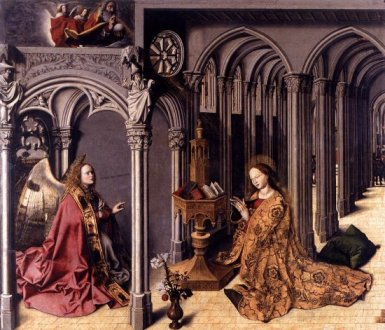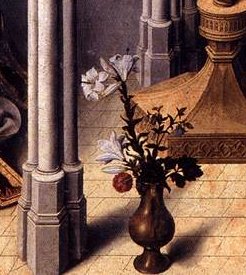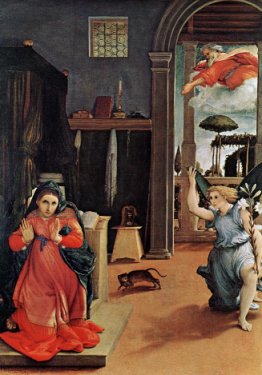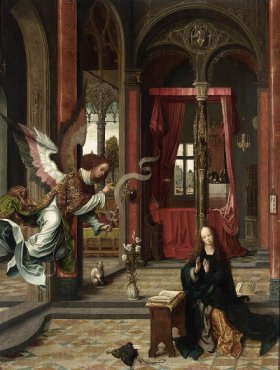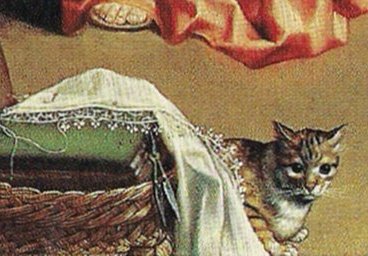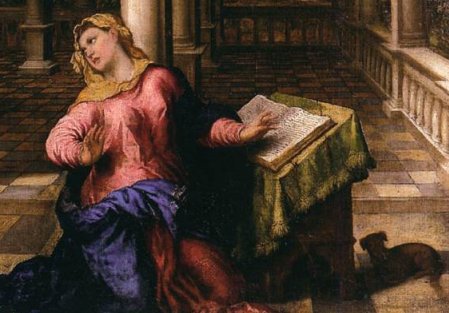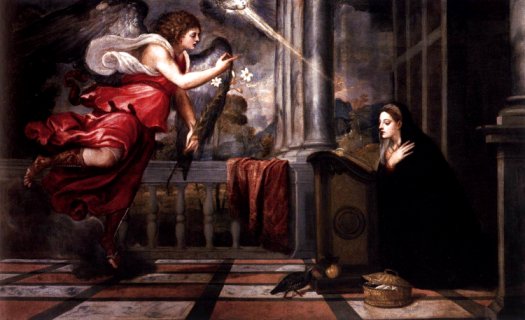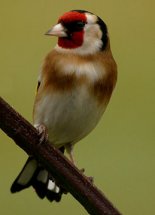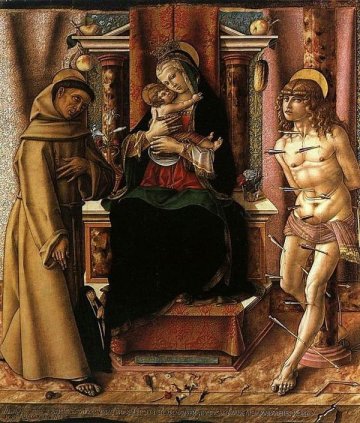|
Signs and Symbols 1 - living things |
|
|
Wild
life - plants |
|
|
|
|
|
Other flowers that have
become associated with the Virgin are columbines, cyclamen, lily of
the valley and
irises. Gabriel sometimes carries a palm frond instead of a lily; this is
probably based on the image in the Song of Solomon - 'Thou art stately as
a palm tree'. Palms are more usually associated with martyrdom. |
|
|
|
|
|
. . .and what are we to make of these two, who
appear to have no interest in the proceedings at all? Perhaps
Federico just liked cats. Anna Jameson did not approve; she considered the pictures 'an example of the decline of religious art' at this time. |
|
|
|
|
|
Details from Annunciations by Federico Barocci. S. Maria degli Angeli, Assisi (left) Galleria Nazionale delle Marche, Urbino (right) |
|
|
Caporali's Annunciation has a cat and dog fight going on in the background; the faithful dog ousting the wicked cat. Meanwhile, Paris Bordone's dog is watching carefully over his mistress. Are there some puppies under the lectern? It's hard to see. |
|
|
|
|
|
|
|
|
Birds Like flowers, the iconography of birds provides endless fun for art historians. The obvious symbol is that of the dove, and we have dealt with that here. Look out also for peacocks, partridges, and goldfinches! It seems that partridges generally have a negative image in biblical scholarship, but they can be a symbol of the Virgin because 'The female partridge turns to her companion the same way the virgin annunciate turned to the Archangel Gabriel'. (Impelluso, Nature and its Symbols). Convinced? Nor am I, but maybe Titian was, as he included a pair of them in this Annunciation, from the Scuola Grande di San Rocco in Venice, where it does its best to hold its own with all those Tintorettos. |
|
|
|
|
|
Peacocks do pop up occasionally, as in this
wonderful Annunciation by Carpaccio in which Mary has clearly been busy
feeding the Venetian pigeons. Again, their reputation is rather
ambivalent; they can be seen as an image of vanity. They also represent resurrection and rebirth, as it was assumed that they lost
their feathers in autumn and grew them back in the winter. As we have
seen, Gabriel sometimes sports peacock feathers. |
|
|
|
|
|
There is also a goldfinch in Carpaccio's painting (on the ground by the angel) and this is a familiar symbol of the crucifixion of Christ that is to come, and is often seen in Madonna and Child images. Goldfinches feed on thistles, which brings to mind the crown of thorns, and the red face represents Christ's Blood. |
|
|
|
|
|
The thought may have occurred that these birds -
peacocks and goldfinches particularly - are extremely attractive and not
that easy to paint. Their function as a simple display of the artist's skill
should not be discounted. |
|
|
And finally . . . . . A snail. Here it is, slithering across the floor in this wonderfully ornate Annunciation by Francesco del Cossa in the Gemäldegalerie, Dresden. |
|
|
|
|
|
It seems that this snail has caused endless debate in
artistic circles, with lame attempts to suggest why the creature might be an
attribute of the Virgin Mary. (In the medieval mind it was a symbol of
humility, demonstrated by the withdrawal of its horns, though in this respect
Cossa's snail is anything but humble.) In a lengthy but fascinating chapter in a book called On n’y voit rien the art historian Daniel Arasse looks at the structure of the painting. God on high and the snail below have a similar shape, and give the picture a sense of balance. In fact, the dove of the Holy Spirit seems to be on a trajectory towards the snail rather than the Virgin Mary. Try putting your finger over the snail and the picture does indeed look unbalanced. But why a snail? Maybe Cossa thought about all those art historians to come, and decided that all their endless agonising might at least keep his picture in the limelight. Or maybe he did it just to annoy them. January 2012 - another snail! No, not in the garden eating the veg., but in the National Gallery! Here it is, in Carlo Crivelli's Madonna with Saints Francis and Sebastian. I'm not sure whether spotting this moves us on in our debate on the symbolism of the snail, and I'll leave writing a monograph on the iconography of snails to someone else. It's a rather odd picture, isn't it, particularly that dreadful simpering face of St Francis. I quite like Sebastian's 'I can take it, mate', expression though. |
|
|
|
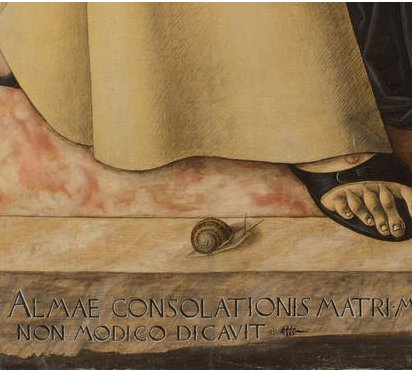
|
